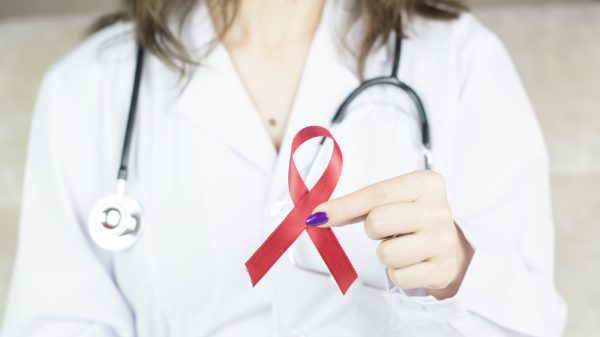A new method to cure HIV—by transplanting HIV-resistant stem cells from umbilical cord blood—has yielded long-term successful results, say scientists. The approach was successfully used to treat the “New York patient,” a middle-aged woman with leukemia and HIV who self-identifies as mixed race, who has been without HIV in her blood since her transplant in 2017. Using stem cells from cord blood rather than from compatible adult donors, as has been done previously, increases the potential to cure HIV via stem cell transplantation in people of all racial backgrounds.
The researchers shared the full results in the journal Cell.
“The HIV epidemic is racially diverse, and it’s exceedingly rare for persons of color or diverse race to find a sufficiently matched, unrelated adult donor,” says Yvonne Bryson of UCLA, who co-led the study with fellow pediatrician and infectious disease expert Deborah Persaud of the Johns Hopkins University School of Medicine. “Using cord blood cells broadens the opportunities for people of diverse ancestry who are living with HIV and require a transplant for other diseases to attain cures.”
Nearly 38 million people around the world live with HIV, and antiviral treatments, while effective, must be taken for life. The “Berlin patient” was the first person to be cured of HIV in 2009, and since then, two other men—the “London patient” and “Düsseldorf patient”—have also been rid of the virus. All three received stem cell transplants as part of their cancer treatments, and in all cases, the donor cells came from compatible or “matched” adults carrying two copies of the CCR5-delta32 mutation, a natural mutation that confers resistance to HIV by preventing the virus from entering and infecting cells.
Only around 1% of white people are homozygous for the CCR5-delta32 mutation and it is even rarer in other populations. This rarity limits the potential to transplant stem cells carrying the beneficial mutation into patients of color because stem cell transplants usually require a strong match between donor and recipient.
Knowing it would be almost impossible to find the New York patient a compatible adult donor with the mutation, the team instead transplanted CCR5-delta32/32-carrying stem cells from banked umbilical cord blood to try to cure both her cancer and HIV simultaneously. The patient received her transplant in 2017 at Weill Cornell Medicine thanks to a team of transplant specialists led by Drs. Jingmei Hsu and Koen van Besien. Her case was part of the NIH-sponsored International Maternal Adolescent AIDS Clinical Trials (IMPAACT) Network and was co-endorsed by the Adult AIDS Clinical Trials Network (ACTG).
The umbilical cord blood cells were infused alongside stem cells from one of the patient’s relatives to increase the procedure’s chance of success. “With cord blood, you may not have as many cells, and it takes a little longer for them to populate the body after they’re infused,” says Bryson. “Using a mixture of stem cells from a matched relative of the patient and cells from cord blood gives the cord blood cells a kick start.”
The transplant successfully put both the patient’s HIV and leukemia into remission, and this remission has now lasted more than four years. Thirty-seven months after the transplant, the patient was able to cease taking HIV antiviral medication. The doctors, who continue to monitor her, say she has now been HIV negative for more than 30 months since stopping antiviral treatment (at the time that the study was written, it had only been 18 months).
“Stem cell transplants with CCR5-delta32/32 cells offer a two-for-one cure for people living with HIV and blood cancers,” says Persaud. However, because of the invasiveness of the procedure, stem cell transplants (both with and without the mutation) are only considered for people who need a transplant for other reasons, and not for curing HIV in isolation; before a patient can undergo a stem cell transplant, they need to undergo chemotherapy or radiation therapy to destroy their existing immune system.
“This study is pointing to the really important role of having CCR5-delta32/32 cells as part of stem cell transplants for HIV patients, because all of the successful cures so far have been with this mutated cell population, and studies that transplanted new stem cells without this mutation have failed to cure HIV,” says Persaud. “If you’re going to perform a transplant as a cancer treatment for someone with HIV, your priority should be to look for cells that are CCR5-delta32/32 because then you can potentially achieve remission for both their cancer and HIV.”
The authors emphasize that more effort needs to go into screening stem cell donors and donations for the CCR5-delta32 mutation. “With our protocol, we identified 300 cord blood units with this mutation so that if someone with HIV needed a transplant tomorrow, they would be available,” says Bryson, “but something needs to be done [on] an ongoing basis to search for these mutations, and support will be needed from communities and governments.”

































































